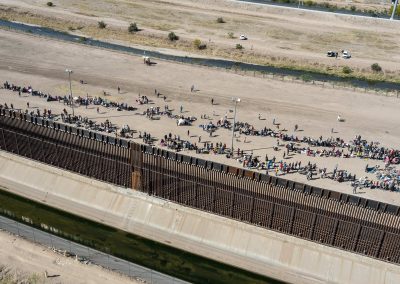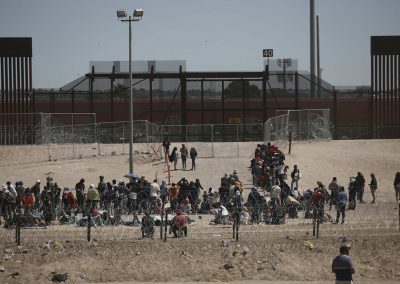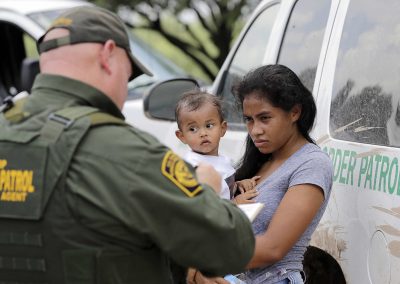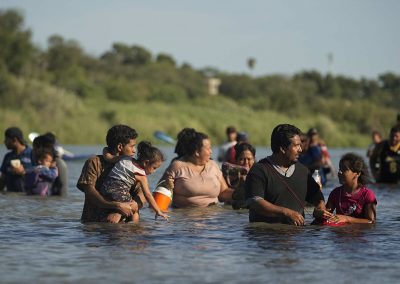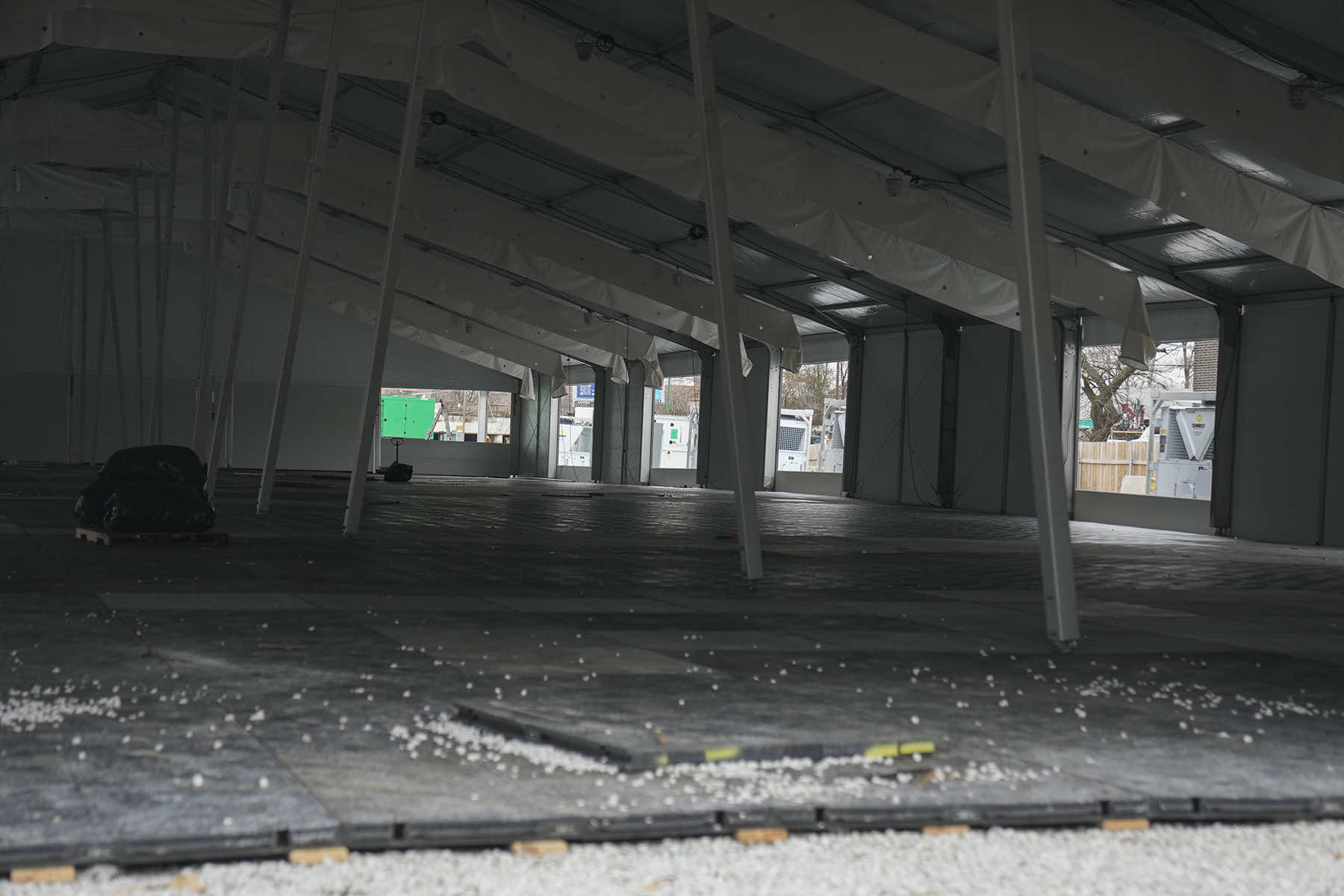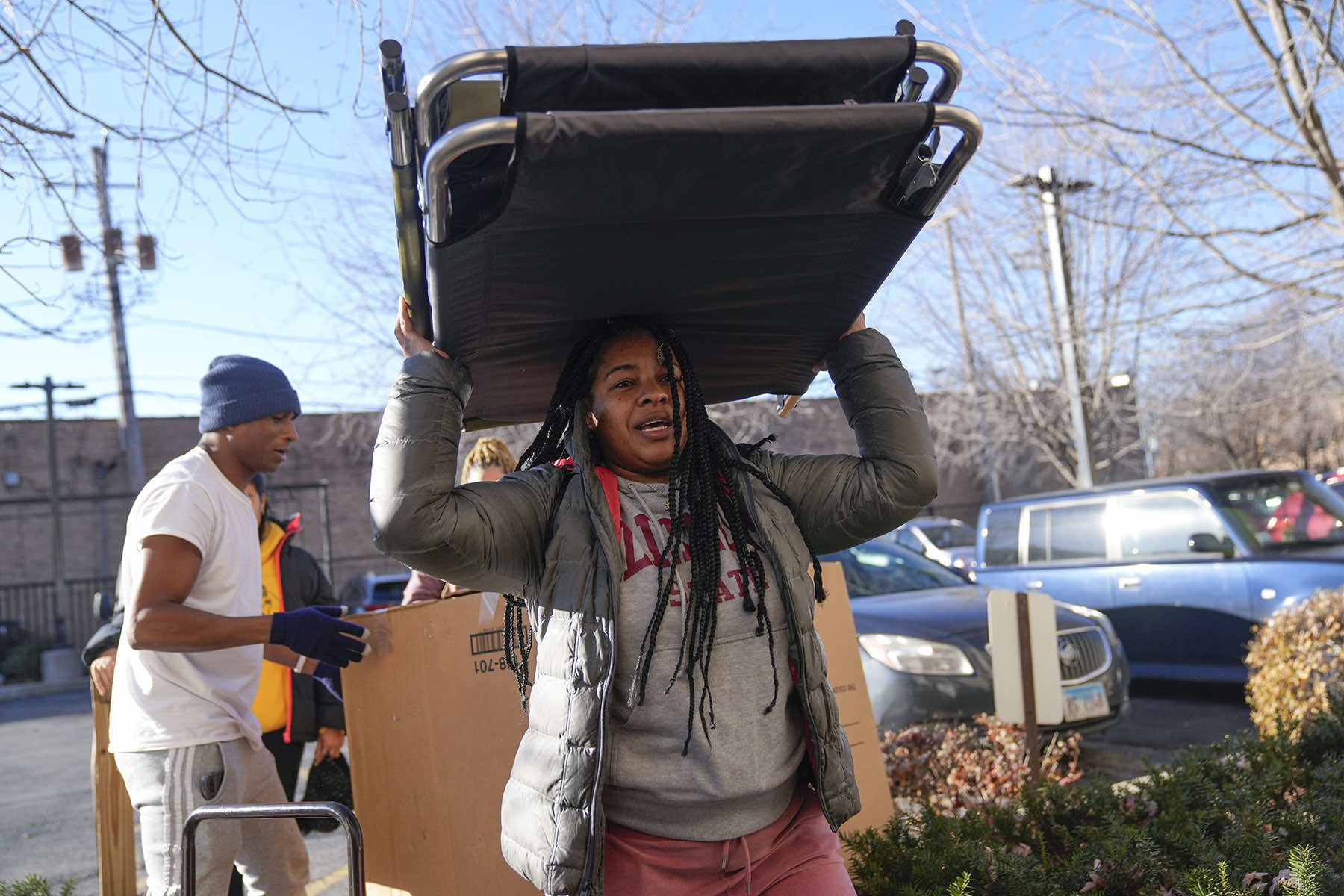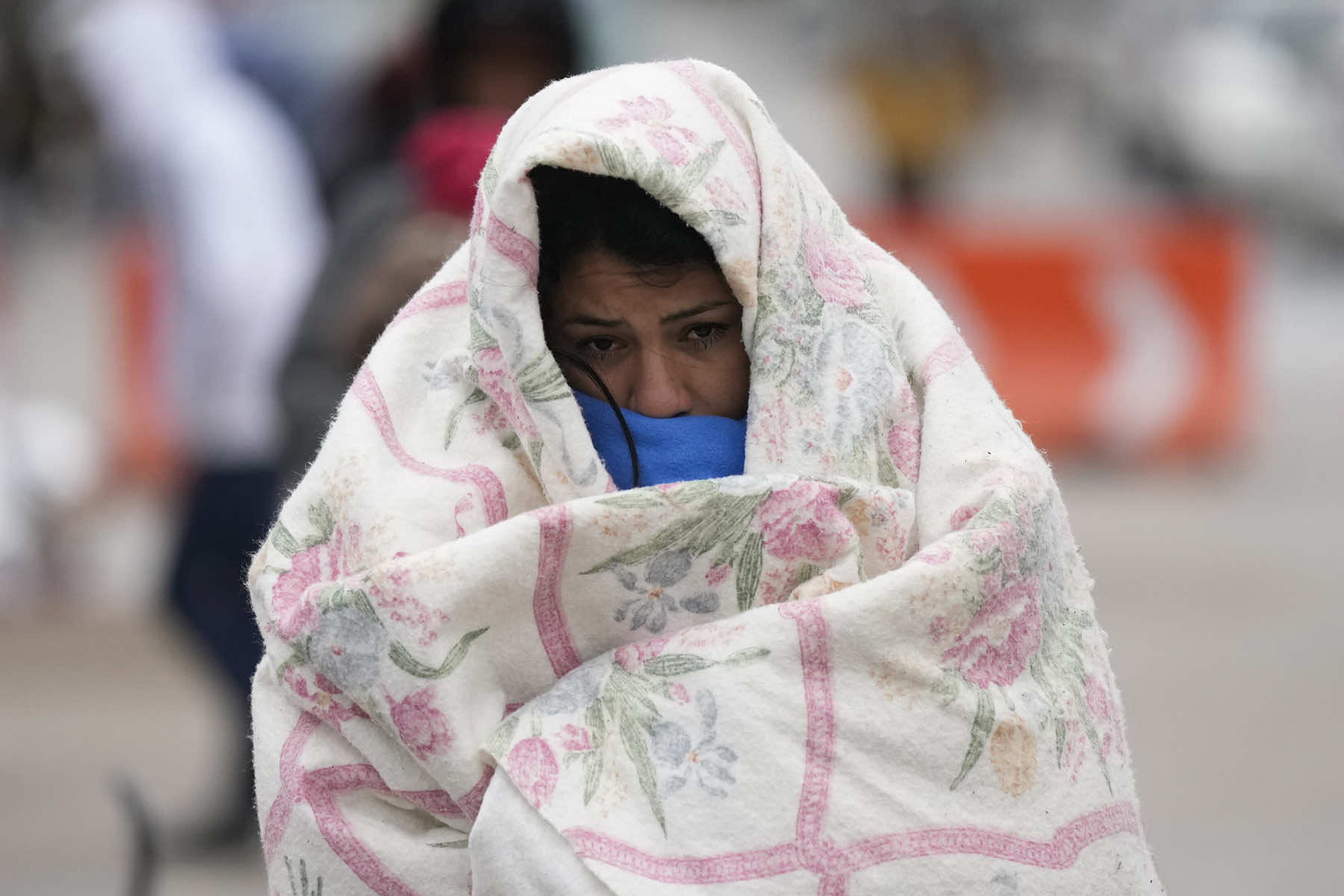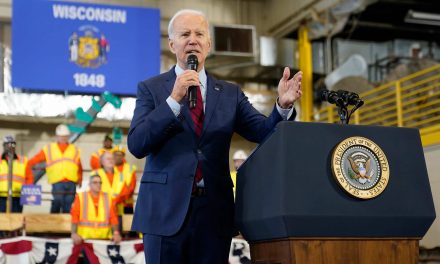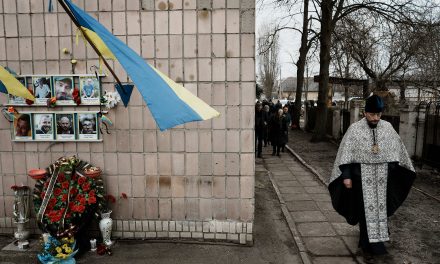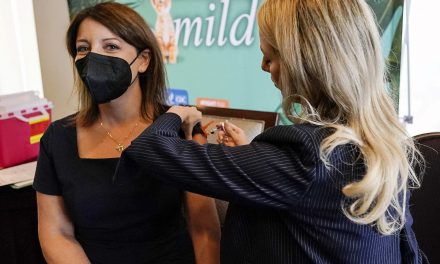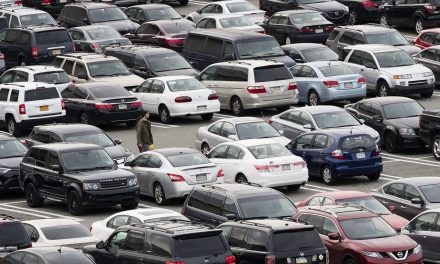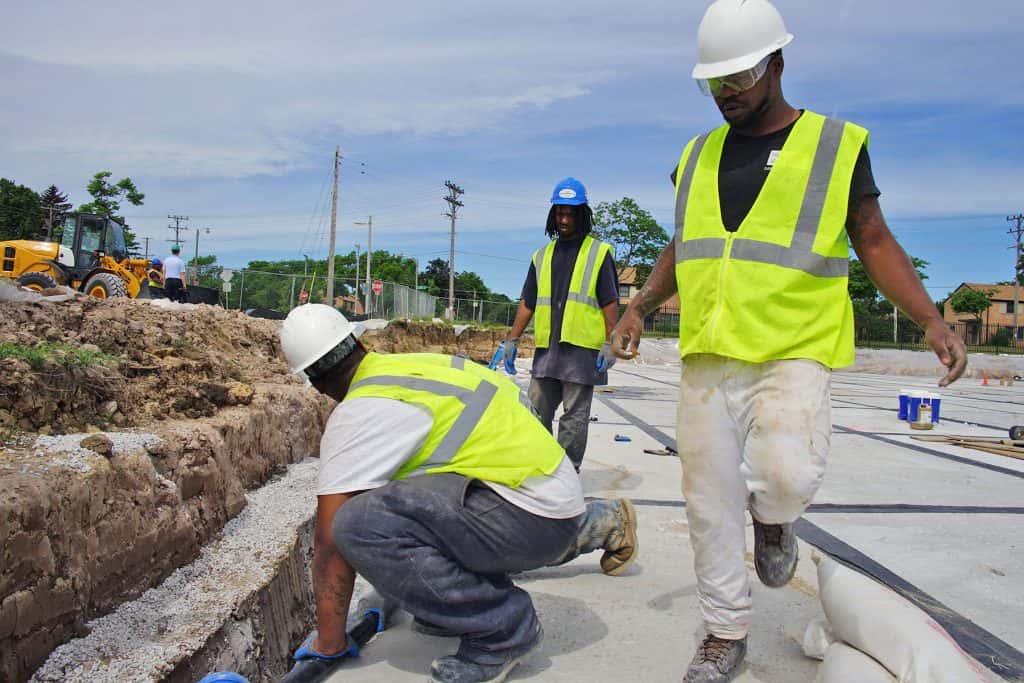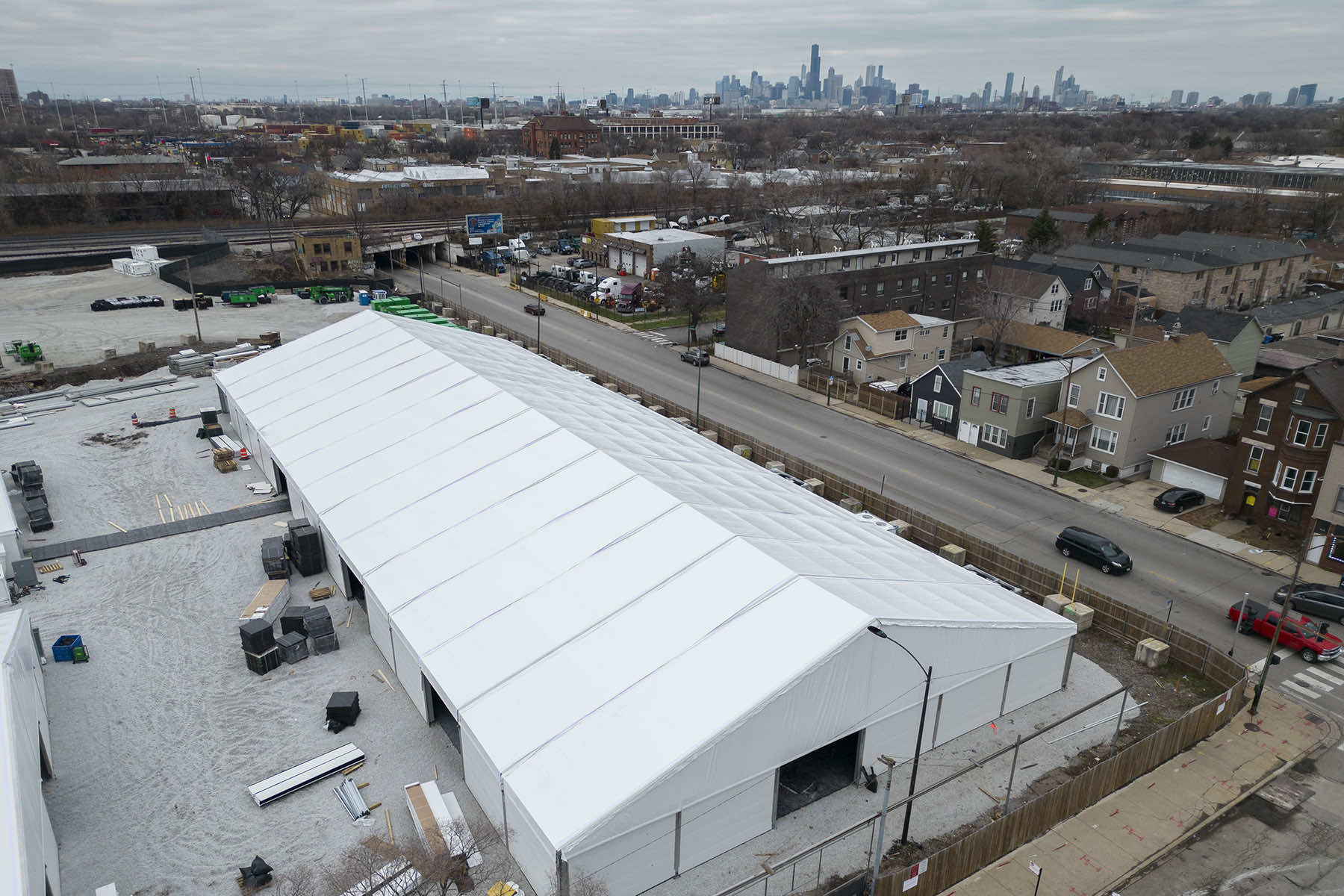
Governor J.B. Pritzker’s administration announced on December 5 that it is scrapping plans for a temporary winter camp for migrants in Chicago, citing the risk of contaminants at the former industrial site.
The setback comes as Chicago struggles to house more than 24,000 migrants arriving from the border with Mexico since August of last year, most in buses sent by Texas Governor Greg Abbott, according to city data released in December.
With the coldest weather looming — and despite a partnership with religious leaders to provide temporary housing — hundreds of asylum-seekers still await placement at airports and police stations, some of them still camped on sidewalks outside precinct buildings.
Responding to the urgent need, the state put up $65 million for a tent camp in Brighton Park designed to hold 2,000, and for permanent structures at a 200-bed site in the Little Village neighborhood giving priority to families and people with disabilities.
Construction at the Brighton Park site began despite residents’ protests that the 9-acre property is polluted and would risk the health of any migrants housed there. According to an environmental report that identified contaminants, the site was previously home to a railyard with tanks and oil houses, a zinc smelter, and truck trailer parking.
The city released a study from consultant Terracon that detailed the discovery and removal of sections of soil from the Brighton Park site that contained higher-than-expected levels of mercury and other contaminants.
Mayor Brandon Johnson’s office gave assurances, based on Terracon’s findings, that the shelter site was safe for temporary residential use. That was before Pritzker’s office pulled the plug on it after the Illinois Environmental Protection Agency reviewed the nearly 800-page environmental report. By then, several large white tents outfitted with HVAC units had already been erected there.
“My administration is committed to keeping asylum seekers safe as we work to help them achieve independence,” Pritzker said in a statement. “We will not proceed with housing families on a site where serious environmental concerns are still present.”
The Illinois Environmental Protection Agency concluded that more testing was needed to ensure the site was safe.
“The well-being of residents and workers at the site is our highest priority, and current and planned site conditions do not adequately reduce risks of human exposure to known and potential environmental conditions,” said Illinois EPA Director John J. Kim.
Alderwoman Julia Ramirez, the City Council representative for the ward hosting the site, opposed the project over safety concerns.
“I am glad that the Governor’s office decided not to continue using this lot for shelter and made sure that we are stepping up to the responsibility of caring for the health of immigrant families and residents,” she said, adding the search for safe shelter must continue.
Construction was halted on December 4 while the state’s environmental agency evaluated the report, which compiled laboratory results assessing the site’s soil, groundwater, and soil gas.
An analysis found excess levels of mercury, four metals, DEHP — a chemical present in plastic products — and two semivolatile organic compounds (SVOCs), which can be found in pesticides, oil-based products, and fire retardants.
The soil surrounding the flagged samples was excavated and disposed offsite, and a barrier was constructed to limit access to that soil, according to the report.
Mayor Brandon Johnson’s office said in a statement that with such safeguards, the site was safe for temporary housing. After the project was canceled, Johnson told reporters “the mission is still very much alive” to find shelter for immigrants sleeping outdoors.
The city reiterated its resolve to move quickly, adding that despite being informed of the report and its findings, “the State provided no additional guidance on its preferred methodology or assessment criteria, nor raised any concerns about its own decision to move forward with construction prior to the release of Terracon’s report.”
Yimara Pajaro, a Venezuelan seamstress, said she and her partner camped outside a South Side police station for two months before being moved into a church for temporary shelter.
Sleeping outside in Chicago, after several snowfalls and subfreezing nights this fall, left them in bad shape, said Pajaro. She suffered three asthma attacks worsened by the cold.
Pajaro said she would not want to move to a shelter designed to hold thousands, like the one planned for Brighton Park. And if the site is polluted, “they should not bring anyone there,” she said. “We will get sick. It seems like our health doesn’t matter to them.”
Mayors of Chicago, Denver, Houston, Los Angeles and New York have been pressing for more federal aid to accommodate the new arrivals. Migrants have been arriving in the Democrat-led cities on buses funded by the Republican governors of Texas and Florida. Critics initially decried that as a political stunt, but more than a year later, the cities are struggling to cope with the influx amid dwindling resources.

